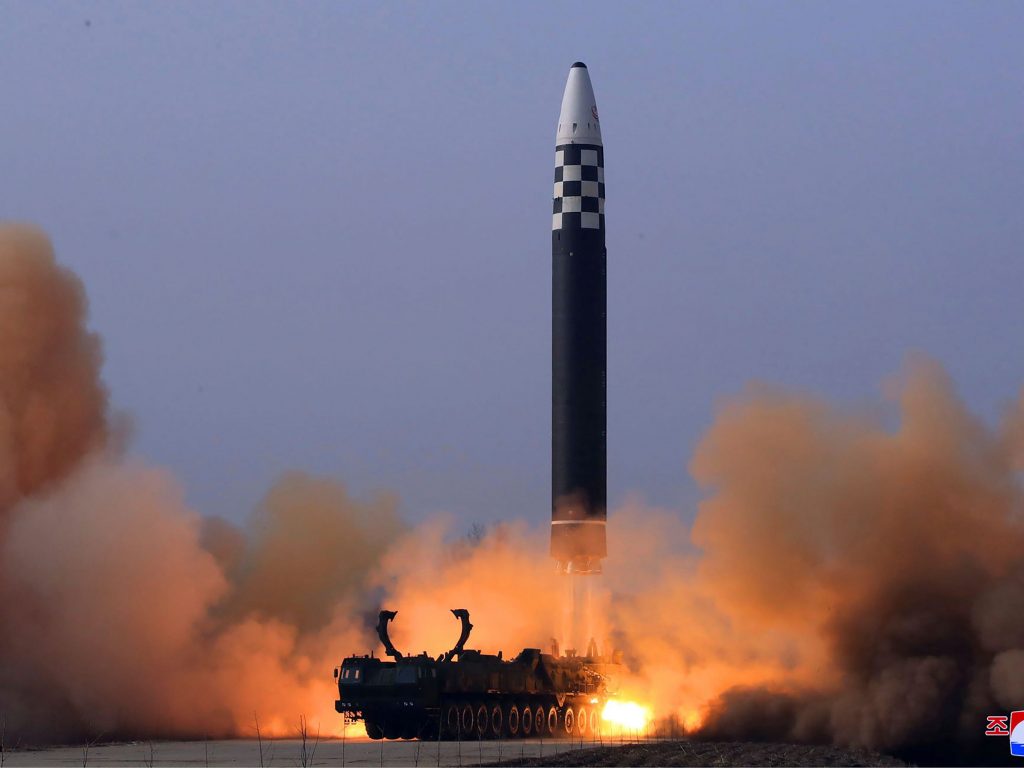- North Korea said it launched its largest intercontinental ballistic missile in a test on Thursday.
- Experts say footage released by North Korean state media shows the launch may have been faked.
- Video posted by North Korean state media showed Kim Jong Un and other military officials observing the launch.
North Korea claims it successfuly launched its largest intercontinental ballistic missile in a test run on Thursday, but there are signs everything is not as it appears.
This was North Korea's first successful ICBM test since Nov. 2017 and the Hwasong-17 is considered the country's largest nuclear-capable missile.
The missile reached an altitude of 3,853 miles and traveled 671 miles during its 71-minute flight before it crashed into Japanese waters, according to reports from South Korean and Japanese officials, NK News first reported. North Korea's KCNA gave a simliar report on the missiles capabilities.
But experts now say footage aired by Korean state media may show the launch was a head-fake. The state TV footage appears to be from an failed test of the Hwasong-17 on March 16, according to a report from NK News, suggesting either North Korea used the wrong footage or the Hwasong-17 wasn't actually launched.
—Shreyas Reddy (@shreyas_k_reddy) March 25, 2022
That launch ended when debris from the projectile landed near the North Korean capital, Pyongyang.
"A photo seen by NK News shows a red-tinted ball of smoke at the end of a zig-zagging rocket launch trail in the sky," NK News reported.
A "high-level government official" told South Korea's Yonhap News Agency that officials in Seoul believe its possible the March 24 test was actually of a Hwasong-15 ICBM, an existing missile type first flight-tested in 2017, with enhancements to the engine thrust in order to achieve their desired range.
—Colin Zwirko (@ColinZwirko) March 25, 2022
Regardless of whether or not this test of the Hwasong-17 was real, North Korea's posturing has raised the alarm for South Korea, Japan and the United States.
The White House said Pyongyang must "immediately cease its destabilizing actions" calling the launch a "brazen violation" of strict UN security council resolutions which ban North Korea from testing ballistic missiles — North Korea does not recognize these resolutions as legitimate.
The Japanese foreign minister said the launch is a "clear and serious challenge" to the international community.
Ankit Panda, senior fellow at the Nuclear Policy Program at the Carnegie Endowment on International Peace said this test "presages the start of a more dangerous period on the Korean peninsula."
"There's a fairly simple message with testing of this sort," Panda said in a post on the Carnegie Endowment's Twitter. "It's basically telling the US that nuclear deterrence is a fact of life today and North Korea can hold at risk targets in the United States."
